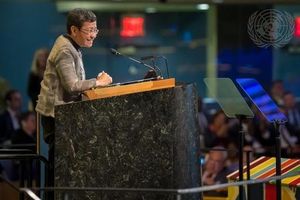New York has reaffirmed its status as the leading global financial center, as evidenced by the results of the 37th Global Financial Centers Index (GFCI 37), published in March 2025. The city has held this top position since the autumn of 2018 and continues to outpace its competitors within the financial sector.
According to the GFCI results, London secured the second spot, while Hong Kong came in third. The rankings, prepared by the China Development Institute in Shenzhen and Z/Yen Partners in London, illustrate the competitive landscape of global financial hubs.
The complete list of the top ten financial centers includes:
- 4. Singapore
- 5. San Francisco
- 6. Chicago
- 7. Los Angeles
- 8. Shanghai
- 9. Shenzhen
- 10. Seoul
Interestingly, compared to the last ranking (GFCI 36) in September 2024, there was only one alteration in the top ten. Seoul managed to climb from 11th to carve out its place at 10th, pushing Frankfurt down in the rankings.
Highlighting the competition further, the city of Rome displayed remarkable progress, rising a staggering 19 places from 76th to 57th. This significant leap indicates a growing recognition of its financial potential.
The GFCI divides its findings by regions to present a broader perspective. For Western Europe, the top five ranked cities consist of London, Frankfurt, Dublin, Geneva, and Luxembourg. Meanwhile, in the Asia-Pacific region, the notable titles include Hong Kong, Singapore, Shanghai, Shenzhen, and Seoul.
North America’s financial ranking features New York, followed by San Francisco, Chicago, Los Angeles, and Washington. Eastern Europe and Central Asia's promising financial centers are led by Astana, Tallinn, Cyprus, Riga, and Almaty. In the Middle East and Africa, cities that make up the leaders include Dubai, Abu Dhabi, Casablanca, Mauritius, and Tel Aviv. Not to be overlooked, Latin America and the Caribbean host São Paulo, Cayman Islands, Bermuda, Barbados, and Rio de Janeiro in their rankings.
In regard to fintech innovation, the GFCI highlighted that New York again took the lead, followed closely by London, Shenzhen, Hong Kong, and San Francisco. A total of 119 financial centers were evaluated, and their rankings came about through inputs from 4946 respondents who assessed the cities using 140 instrumental factors. This comprehensive methodology plays a crucial role in the index’s accuracy.
Notably, Kyiv is absent from the rankings. Among Russian cities, Moscow ranked 115th, and St. Petersburg found itself at 117th. This illustrates the varying levels of financial activity and global competitiveness among these regions.
The Global Financial Centers Index is updated biannually, providing an ongoing assessment of how cities evolve within the financial arena. It serves as a vital resource for investors, stakeholders, and policy-makers seeking to understand dynamics in global finance.
Reflecting on the past year, the March 2024 rankings showed New York, London, Singapore, Hong Kong, San Francisco, Shanghai, Geneva, Los Angeles, Chicago, and Seoul within the top ten. What remains fascinating is how these rankings can shift and reflect broader economic trends and changes in financial landscapes on a global scale.
As financial sectors across continents continue to adapt and innovate, New York’s position as a leader in the financial services industry will be closely monitored. The GFCI serves not only as a competitive yardstick but also as a reminder of the complexities underlying global finance and the importance each city plays.



